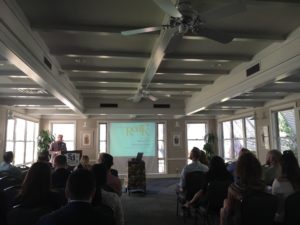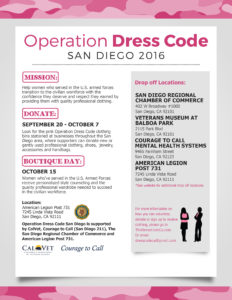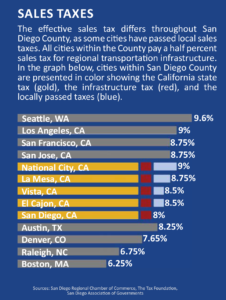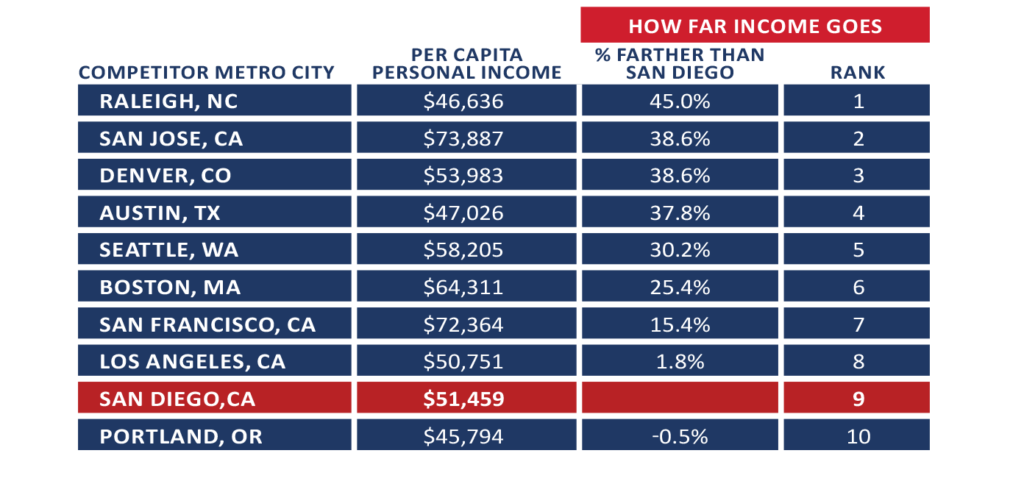September 12, 2016
The following content is the latest addition to the Small Business Resources Center. Visit www.sdchamber.org/smallbiz to learn more.
—

Whether it’s using ApplePay, Samsung Pay, writing a check or swiping a common debit card, there is no getting around the fact that the world is trending towards a world without cash.
Today, purchases made in the US are only about 55 percent cash, 45 percent credit/debit/other, and that number is on the rise. Sweden is leading the global cashless charge with cash purchases down to about 41 percent of the total; over half are cashless.
Further, those nasty rates and fees that have plagued merchants for so long are now being sidestepped, as merchants can now openly declare a “convenience fee” addition to just about any purchase, and pass the bank and other fees along to the consumer for the convenience of using the chosen cash alternative. Indeed, gas stations have had a lower cash price and a higher credit/debit price for years.
So what are we, the small business community, to learn from this trend? Many in the “payments industry” would offer the following two basic rules:
- The more ways you allow people to pay, the more customers you will have.
- Those customers using non-cash vehicles such as their VISA card, tend to spend more than customers using cash.
Today, with the payments industry being as competitive as any other, merchants have help navigating the payments landscape as increased sales are key to both the merchant and the payment service/equipment provider. Local independent sales offices (ISOs) are offering personalized service locally, which is in turn supported by New York Stock Exchange (NYSE) giants in the processing space.
We could not find statistics specific to the local trend here in San Diego, but our lifestyle tends to trend to the more techie side, likely due to the local influence of technology-related industries and companies in San Diego. With that in mind, it is logical to presume that our non-cash spend is a bit more than the national average of 55 percent. For fun, let’s say San Diego purchases are 50 percent non-cash and 50 percent cash.
With that in mind, are you up to speed on all of the available ways for your customers to pay you? If not, consider seeking the advice of a payments professional.
Even parking meters take plastic!
—

Keith Woolgar, Account Manager, NPC Payments
About the Author
Keith Woolgar – a proud Chamber member of 14 years and Chamber Ambassador – is the Account Manager for NPC Payments, a merchant services/credit card processing business that services over 400 small businesses in San Diego County, including the San Diego Regional Chamber, San Diego County Office of Education and the San Diego Mission.
Located in the Kearny Mesa neighborhood, NPC Payments is a 21-year old company with a five-person team.
 The Chamber’s San Diego Young Leaders (SDYL) group held a meeting and mixer at the Treetops inside the San Diego Zoo. During the meeting, SDYL members heard from San Diego Zoo Global’s Chief Human Resources Officer and HR Professional of the Year, Tim Mulligan, who recently authored ROAR: How to Build a Resilient Organization. After the meeting, SDYL members gathered for a hosted mixer.
The Chamber’s San Diego Young Leaders (SDYL) group held a meeting and mixer at the Treetops inside the San Diego Zoo. During the meeting, SDYL members heard from San Diego Zoo Global’s Chief Human Resources Officer and HR Professional of the Year, Tim Mulligan, who recently authored ROAR: How to Build a Resilient Organization. After the meeting, SDYL members gathered for a hosted mixer.



 This past June, Autism Speaks announced that it has appointed Larissa Kerstetter to the newly created position of Manager of Field Development for Southern California. Larissa Kerstetter’s previous position was as Development Director for the ALS Association’s Greater San Diego Chapter. She left successful corporate positions in the telecom and tech industries when her son – who was diagnosed with Pervasive Developmental Disorder (PDD) – was being mainstreamed from special ed to general ed.
This past June, Autism Speaks announced that it has appointed Larissa Kerstetter to the newly created position of Manager of Field Development for Southern California. Larissa Kerstetter’s previous position was as Development Director for the ALS Association’s Greater San Diego Chapter. She left successful corporate positions in the telecom and tech industries when her son – who was diagnosed with Pervasive Developmental Disorder (PDD) – was being mainstreamed from special ed to general ed. “I am excited to have Larissa Kerstetter on board to oversee Autism Speaks’ activities in San Diego,” said Suzette Martinez, Executive Director of Autism Speaks Southern California. “Her responsibilities will include overseeing Autism Speaks Walk San Diego, (held October 1st), as well as other community events in the Greater San Diego area.”
“I am excited to have Larissa Kerstetter on board to oversee Autism Speaks’ activities in San Diego,” said Suzette Martinez, Executive Director of Autism Speaks Southern California. “Her responsibilities will include overseeing Autism Speaks Walk San Diego, (held October 1st), as well as other community events in the Greater San Diego area.” To learn more about how you can be involved, please contact:
To learn more about how you can be involved, please contact: The Chamber released a new jobs dashboard comparing the affordability of San Diego to nine competing metropolitan areas, including: Raleigh, Seattle, San Francisco, and San Jose. The report found that nearly all competitor metros are more affordable than San Diego, with the exception of Portland. (
The Chamber released a new jobs dashboard comparing the affordability of San Diego to nine competing metropolitan areas, including: Raleigh, Seattle, San Francisco, and San Jose. The report found that nearly all competitor metros are more affordable than San Diego, with the exception of Portland. (